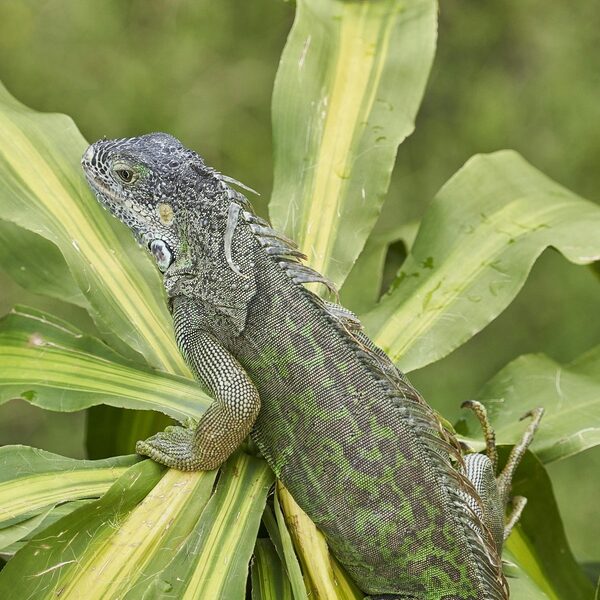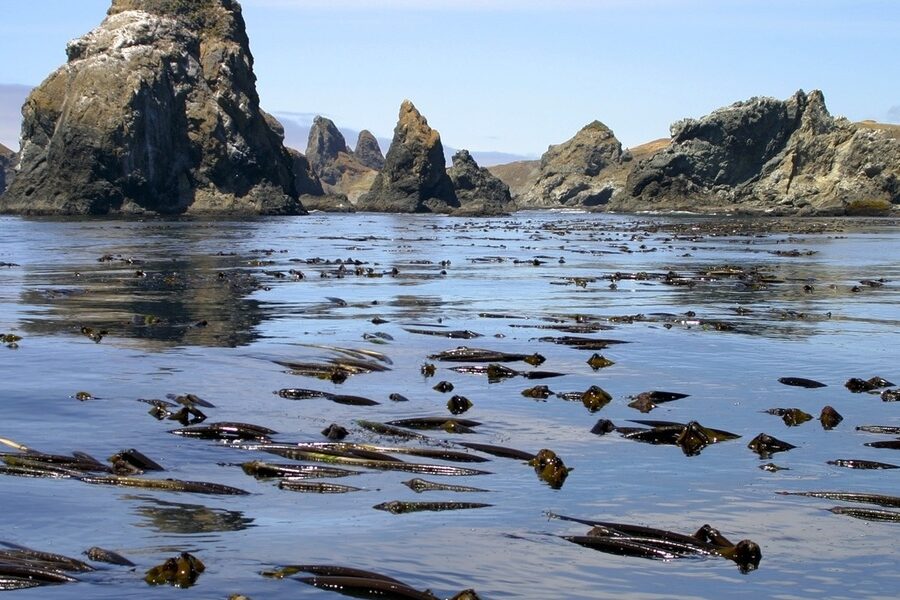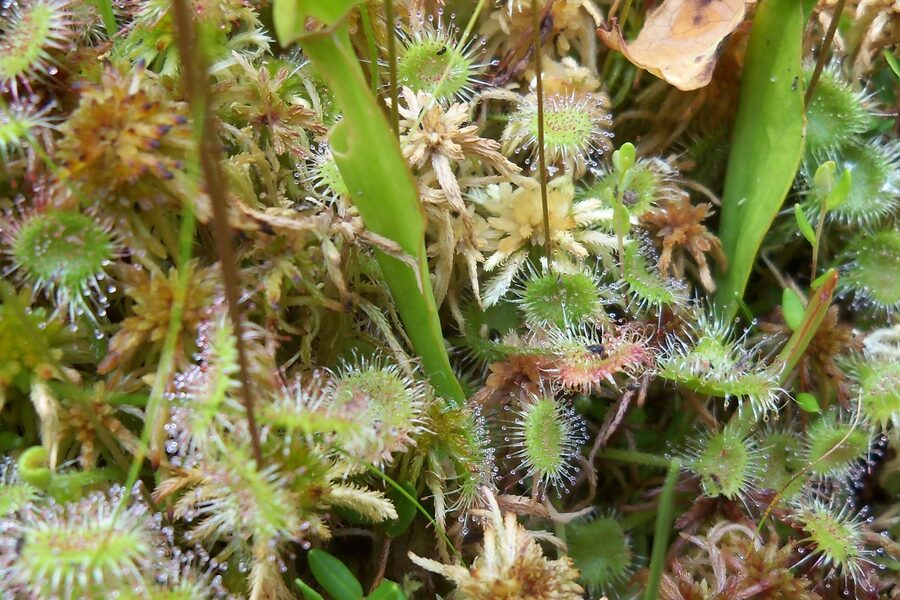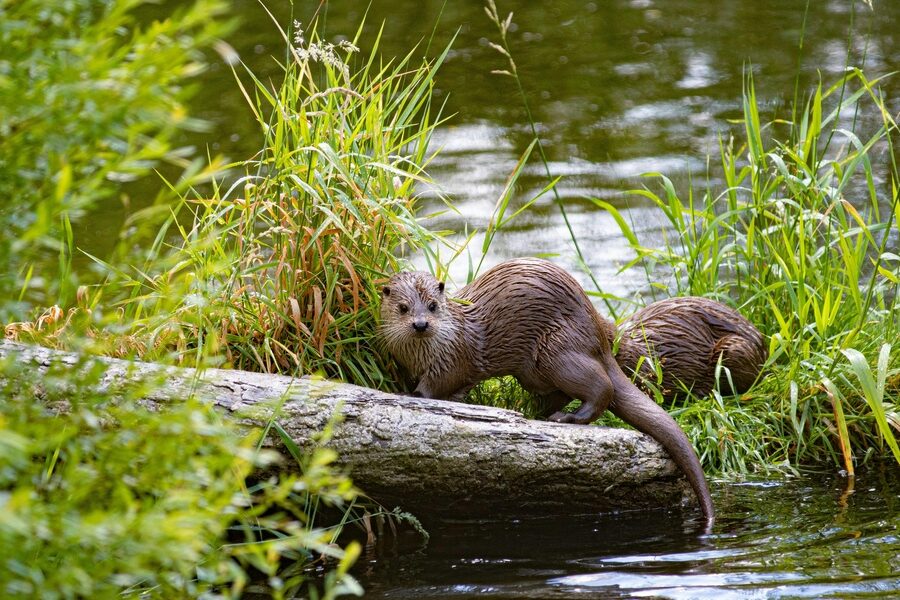Wetlands are noisy, messy workrooms of nature where water, plants and insects meet. From muddy banks to floating lilies, the beetle community reflects local conditions and helps cycle nutrients, making these places biologically rich and worth a closer look.
There are 37 swamp beetles, ranging from American Carrion Beetle to Waterlily Leaf Beetle. For each species, you’ll find below the Scientific name, Size (mm), Habitat/Range to help with identification and comparison — you’ll find below.
How can I reliably identify swamp beetles in the field?
Look for habitat first (standing water, leaf litter, or aquatic plants), then note size, body shape and elytra texture; many species have distinctive antennae or color patterns. Use the provided Scientific name and Size (mm) columns to match suspects, and check Habitat/Range to narrow species by location and typical microhabitat.
Are swamp beetles beneficial or harmful to wetland plants and wildlife?
Most swamp beetles are beneficial: many scavenge or break down organic matter, some prey on pests, and a few interact with aquatic plants without causing widespread damage. Their presence often signals a functioning ecosystem, though a small number can become pests in managed water gardens.
Swamp Beetles
| Name | Scientific name | Size (mm) | Habitat/Range |
|---|---|---|---|
| Great Diving Beetle | Dytiscus marginalis | 27–35 | Ponds, ditches, and marshlands across Europe and northern Asia. |
| Sunburst Diving Beetle | Thermonectus marmoratus | 8–10 | Pools, streams, and cattle tanks in the southwestern United States and Mexico. |
| Grooved Diving Beetle | Cybister fimbriolatus | 28–33 | Ponds, marshes, and slow streams across North America. |
| Spotted Diving Beetle | Acilius sulcatus | 15–18 | Vegetated ponds, fens, and marshes across the Palearctic region. |
| Small Diving Beetle | Laccophilus maculosus | 4–5.5 | Ponds, swamps, and quiet stream edges throughout North America. |
| Giant Water Scavenger Beetle | Hydrophilus piceus | 35–50 | Densely vegetated, stagnant freshwater ponds and marshes across the Palearctic region. |
| Silver Water Beetle | Hydrochara caraboides | 13–18 | Ponds, ditches, and marshy areas with abundant vegetation in the Palearctic region. |
| Squeaker Beetle | Berosus sayi | 4–6 | Shallow, vegetated ponds and marshes in eastern and central North America. |
| Mottled Water Scavenger | Enochrus ochraceus | 3–4 | Shallow water of marshes, fens, and ponds across North America and Europe. |
| American Whirligig Beetle | Dineutus americanus | 9–15 | Surface of ponds, slow streams, and marshes in eastern North America. |
| Common Whirligig Beetle | Gyrinus natator | 5–7 | Water surface of ponds, lakes, and marshes throughout the Holarctic region. |
| Screech Beetle | Hygrobia hermanni | 8–10 | Stagnant, muddy-bottomed ponds and ditches across Europe. |
| Crawling Water Beetle | Peltodytes edentulus | 3–4 | Ponds and swamps with plentiful aquatic vegetation in North America. |
| Waterlily Leaf Beetle | Galerucella nymphaeae | 4–7 | Ponds and marshes with water-lilies across the Holarctic region. |
| Reed Beetle | Donacia crassipes | 8–12 | Reeds and water-lilies in ponds and marshes of the Palearctic region. |
| Arrowhead Leaf Beetle | Donacia cincticornis | 6–9 | Marshes and pond edges with arrowhead plants (*Sagittaria*) in North America. |
| Spatterdock Beetle | Neohaemonia nigricornis | 5–7 | Lakes, ponds, and slow rivers with spatterdock in eastern North America. |
| Swamp Milkweed Leaf Beetle | Labidomera clivicollis | 8–12 | Wet meadows, marshes, and swamps where swamp milkweed grows in North America. |
| Cranberry Rootworm | Rhabdopterus picipes | 4–6 | Cranberry bogs and other acidic wetlands in eastern North America. |
| Marsh Flea Beetle | Altica palustris | 3–4 | Marshes, riverbanks, and wet meadows across the Palearctic region. |
| Marsh Ground Beetle | Elaphrus riparius | 6–9 | Muddy or sandy banks of ponds, swamps, and rivers across the Holarctic. |
| Fen Ground Beetle | Carabus clatratus | 25–38 | Fens, bogs, and marshlands across the Palearctic region. |
| Bog Ground Beetle | Pterostichus nigrita | 9–13 | Bogs, fens, marshes, and wet woodlands across the Holarctic region. |
| River Bank Rove Beetle | Paederus riparius | 7–10 | Wet habitats like riverbanks and marshes across the Palearctic region. |
| Big-eyed Rove Beetle | Stenus bipunctatus | 4–5 | Mudflats and damp soil at the edge of ponds and marshes in Europe. |
| Marsh Beetle | Scirtes hemisphaericus | 2.5–3.5 | Marshes, fens, and bogs throughout Europe. |
| Humpbacked Marsh Beetle | Prionocyphon sp. | 3–5 | Vegetation near springs, swamps, and streams worldwide. |
| Long-toed Water Beetle | Dryops sp. | 3–6 | Edges of streams, ponds, and marshes worldwide. |
| Hairy-eyed Riffle Beetle | Stenelmis crenata | 2.5–3.5 | Submerged wood and roots in slow streams and wetlands in North America. |
| Duckweed Weevil | Tanysphyrus lemnae | 1.5–2 | Still freshwater bodies covered in duckweed across the Holarctic region. |
| Rice Water Weevil | Lissorhoptrus oryzophilus | 2.8–3.5 | Rice paddies and freshwater marshes in North America; invasive in Asia. |
| Aquatic Weevil | Bagous sp. | 2–5 | Ponds and marshes worldwide, often on submerged vegetation. |
| Bog Weevil | Notaris acridulus | 5–7 | Bogs, fens, and marshy grasslands across the Palearctic region. |
| Swamp Firefly | Pyractomena angulata | 10–14 | Marshes, swamps, and wet meadows in eastern North America. |
| Broad-necked Root Borer | Prionus laticollis | 20–50 | Swamps, floodplains, and wet deciduous forests in eastern North America. |
| American Carrion Beetle | Necrophila americana | 12–22 | Moist forests, swamps, and marshes across North America. |
| Burrowing Water Beetle | Hydrocanthus iricolor | 4–5 | Vegetated ponds, swamps, and ditches in eastern North America. |
Images and Descriptions
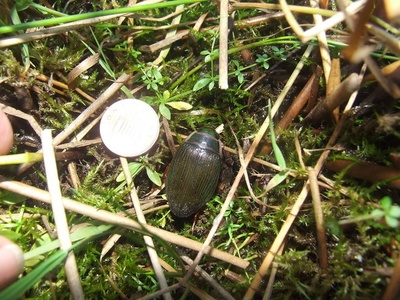
Great Diving Beetle
A large, formidable predator with a smooth, olive-green body and yellow-bordered thorax. Its powerful, hair-fringed hind legs are perfect paddles for hunting tadpoles and small fish.
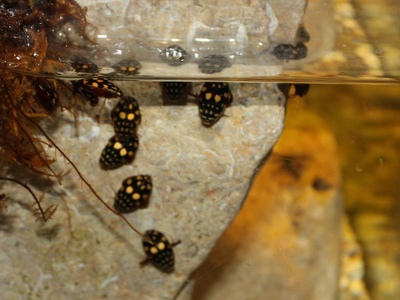
Sunburst Diving Beetle
Known for its beautiful, mottled yellow-and-black pattern, this beetle is a fast swimmer and active predator. Its larvae possess a unique, multi-lensed eye, offering near 360-degree vision.

Grooved Diving Beetle
This large, greenish-bronze diving beetle is a powerful predator of aquatic insects and small vertebrates. The males have distinctive suction cups on their front legs to grip females during mating.
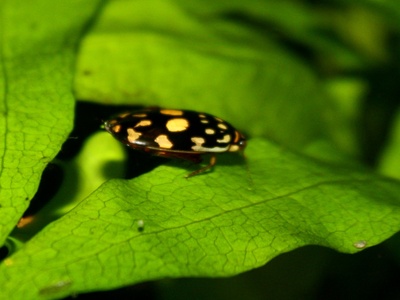
Spotted Diving Beetle
Easily recognized by its flattened, disc-shaped body and speckled yellow-and-black pattern. It is an ambush predator, often hiding among aquatic plants to catch unsuspecting prey.

Small Diving Beetle
A very common and small diving beetle with a distinctive mottled yellow-and-brown pattern. They are often seen darting through shallow water near vegetation and are attracted to lights at night.

Giant Water Scavenger Beetle
One of Europe’s largest beetles, this giant is mostly vegetarian as an adult, feeding on decaying plants. Its larvae, however, are voracious predators of snails and other aquatic invertebrates.
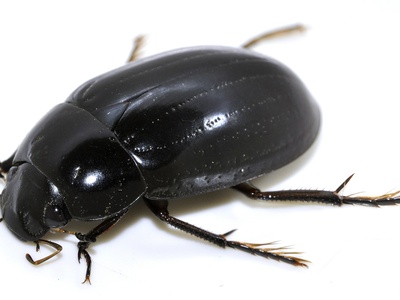
Silver Water Beetle
This beetle gets its name from the silvery sheen on its underside, caused by a layer of air it holds for breathing. Unlike diving beetles, it paddles with its legs alternately.
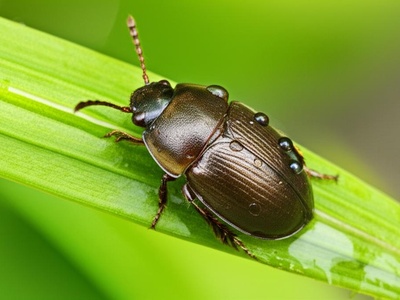
Squeaker Beetle
A small water scavenger beetle that gets its name from its ability to produce audible squeaks when handled. It is a good swimmer and often found climbing on aquatic vegetation.
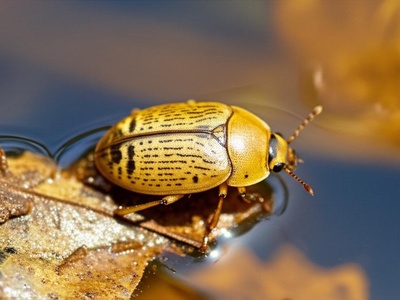
Mottled Water Scavenger
This small, yellowish water scavenger beetle is extremely common in weedy, sunlit wetlands. It is often found crawling on submerged vegetation and in decomposing organic matter.
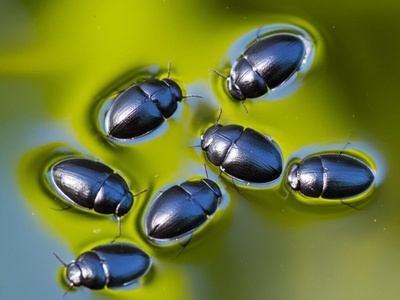
American Whirligig Beetle
Larger than their *Gyrinus* cousins, these beetles swim in gregarious groups on the water’s surface. Their split eyes allow them to see both above and below the water simultaneously.
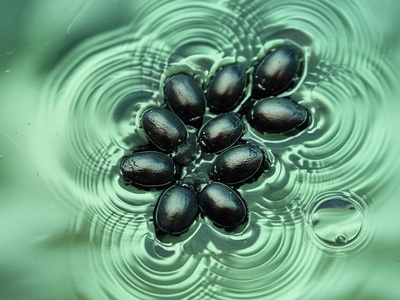
Common Whirligig Beetle
These small, shiny black beetles are famous for their erratic, circular swimming patterns on the water surface. They gather in groups and create ripples to detect fallen insects to eat.

Screech Beetle
Also known as the Squeak Beetle, it makes an audible stridulating sound when disturbed. Its unique, bug-eyed appearance and swimming style make it distinct from other aquatic beetles.
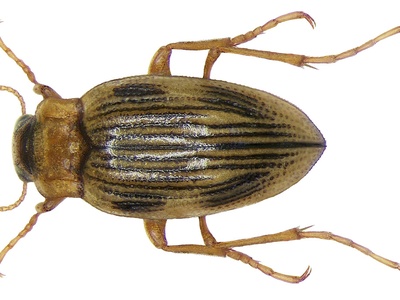
Crawling Water Beetle
This small, oval beetle is a slow swimmer, preferring to crawl along the stems of underwater plants. It can be identified by the two distinct black spots on its thorax.
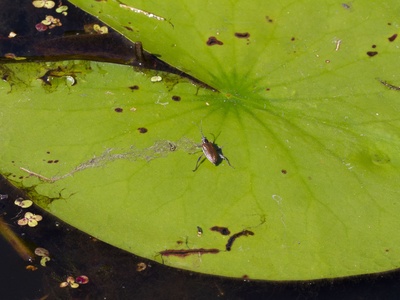
Waterlily Leaf Beetle
This small, yellowish-brown beetle is a common sight on water-lily pads. Both adults and larvae skeletonize the leaves, leaving distinctive brown, meandering trails as they feed.

Reed Beetle
A stunning, metallic beetle that shines with green, gold, or copper hues. Larvae live underwater, tapping into the air-filled stems of aquatic plants with abdominal spines to breathe.
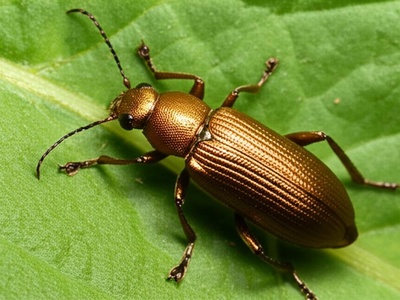
Arrowhead Leaf Beetle
This metallic bronze or greenish reed beetle specializes on arrowhead plants. Like other *Donacia*, its larvae develop underwater on the roots and rhizomes of their host plant.
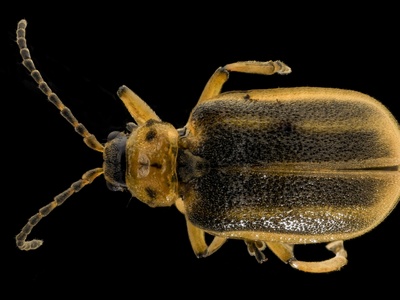
Spatterdock Beetle
A specialized reed beetle that lives its entire life on yellow water-lilies (spatterdock). The adults chew distinctive holes and grooves in the floating leaves.
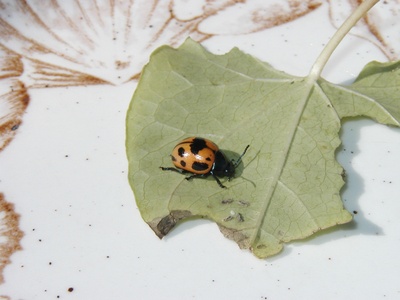
Swamp Milkweed Leaf Beetle
Though not aquatic, this beetle is a swamp specialist. Its bright orange and black coloration warns predators of the toxic compounds it sequesters from its host plant, swamp milkweed.

Cranberry Rootworm
A shiny, dark bronze-to-black leaf beetle. The adults feed on the foliage of cranberry and blueberry plants at night, while the larvae damage the roots, making it a pest in commercial bogs.
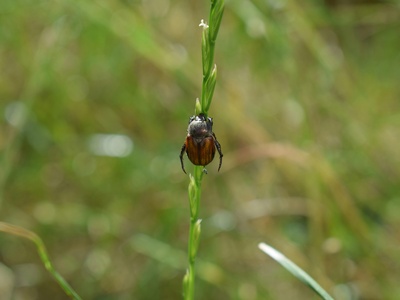
Marsh Flea Beetle
A small, metallic blue or green beetle with powerful hind legs for jumping, just like a flea. It feeds on various marsh plants, particularly those in the mustard and primrose families.
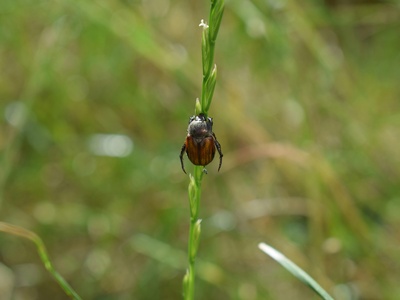
Marsh Ground Beetle
A stunning, metallic green or bronze beetle with large, prominent eyes. It’s an active daytime hunter, sprinting across mudflats to catch small insects with impressive speed.

Fen Ground Beetle
One of Europe’s largest ground beetles, this species has a beautiful bronze or black shell with metallic pits. It is semi-aquatic and can even hunt for snails and tadpoles underwater.

Bog Ground Beetle
A common, medium-sized, all-black ground beetle that thrives in waterlogged soils. It is a nocturnal predator, hunting for invertebrates in the moss and leaf litter of wetlands.
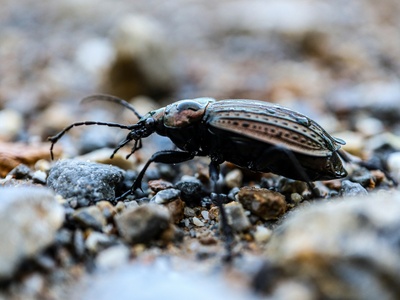
River Bank Rove Beetle
This brightly colored orange and metallic-blue rove beetle is infamous for its potent defensive chemical, pederin. Crushing the beetle on skin can cause severe chemical burns and dermatitis.

Big-eyed Rove Beetle
This tiny predator has enormous eyes and a unique defense. It can shoot a chemical from its abdomen that breaks water tension, allowing it to “jet-propel” itself across the water surface to escape danger.

Marsh Beetle
A small, round, black beetle often found on reeds, sedges, and other marsh vegetation. Its larvae are fully aquatic, living in the water and feeding on decaying organic matter.

Humpbacked Marsh Beetle
These small, brownish beetles are recognized by their distinctly humped or convex shape. Adults are found on foliage near water, while their flattened, aquatic larvae live in seepages and detritus.
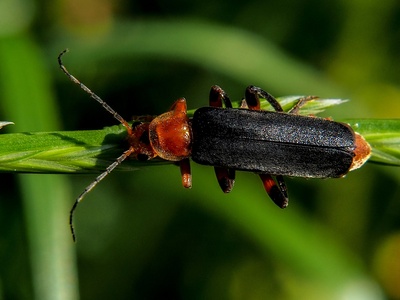
Long-toed Water Beetle
These beetles are covered in a dense coat of fine, water-repellent hairs that trap a layer of air, allowing them to breathe underwater. They crawl slowly along submerged wood and roots.

Hairy-eyed Riffle Beetle
This tiny, dark beetle is truly aquatic as an adult, living its entire life underwater. It breathes using a plastron (a thin film of air) and is often found clinging to waterlogged sticks.
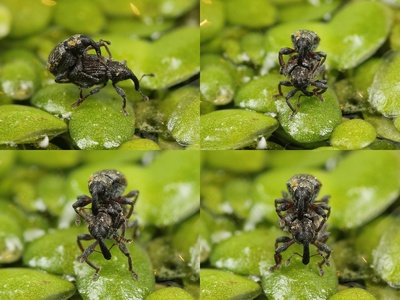
Duckweed Weevil
One of the tiniest weevils, this species is a true specialist. It lives its entire life on duckweed, with its minute size making it almost impossible to spot among the floating green leaves.
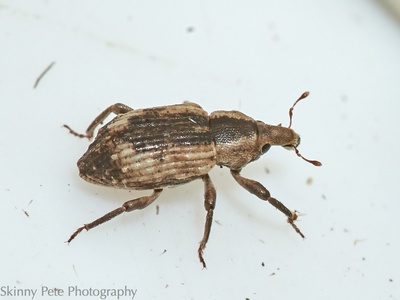
Rice Water Weevil
A major pest of cultivated rice, this small grey weevil lays its eggs in rice stems. The aquatic larvae feed on the roots, depriving the plant of nutrients.

Aquatic Weevil
This genus includes many species of small, often mud-caked weevils that are fully aquatic as adults. They are slow-moving and feed on underwater plants like watermilfoil and pondweed.
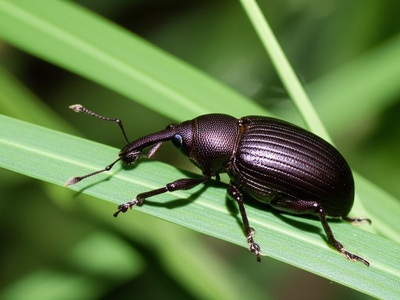
Bog Weevil
This robust weevil is commonly associated with sedges and manna grass, which are typical wetland plants. Its larvae develop within the rootstocks and stems of its host plants.
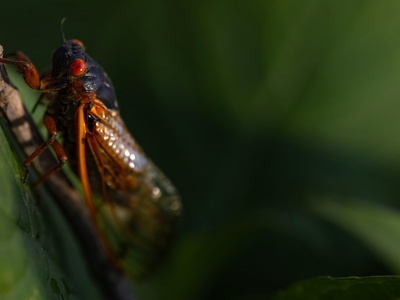
Swamp Firefly
While the flying adults are terrestrial, the larvae of this firefly are semi-aquatic. They hunt for snails in damp soil and shallow water, using neurotoxins to paralyze their prey.
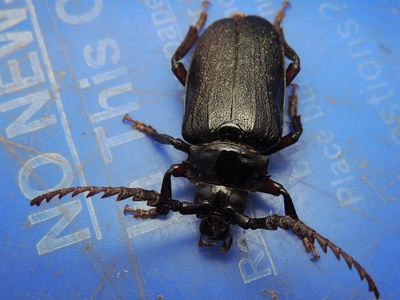
Broad-necked Root Borer
The massive, grub-like larvae of this longhorn beetle live for years in waterlogged, decaying wood and root systems. The large, black adults are nocturnal and often attracted to lights.

American Carrion Beetle
Identified by its yellow thorax with a central black spot, this beetle is a key decomposer. It is often found on carcasses near water, where both adults and larvae feed on decaying flesh and fly maggots.

Burrowing Water Beetle
This smooth, oval, and shiny beetle is adapted for burrowing into the soft sediment at the bottom of wetlands. It is a predator of small invertebrates in the substrate.

